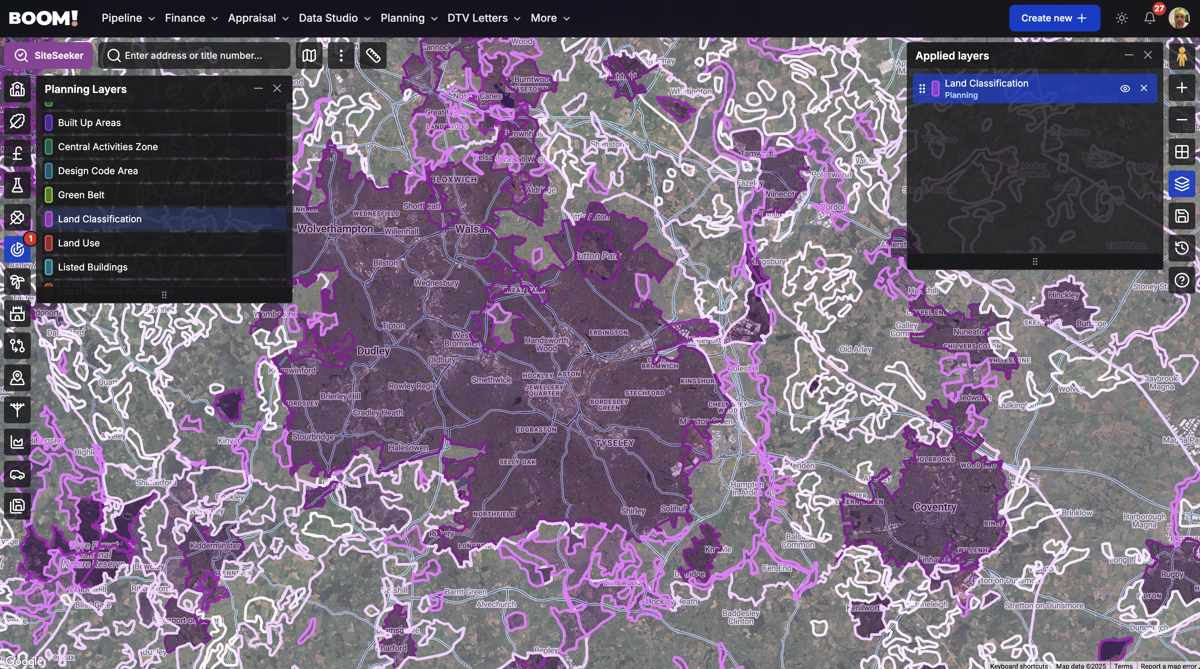7 Essential Agricultural Land Classification (ALC) Facts Developers Must Know in 2025







As a property developer, failing to properly understand the Agricultural Land Classification (ALC) system and related non-agricultural and urban land categories could cost you dearly. Getting ahead of competitors means knowing exactly how these classifications impact your site selection, planning permissions, and project outcomes. Here's what you need to know to stay ahead.
1. What Exactly is the Agricultural Land Classification System?
The ALC system grades land based on its agricultural quality—but for developers, it’s a useful signal of how likely land is to be protected from development. Here’s a breakdown:
Grade 1: Excellent agricultural land – very strong protection, least likely to gain planning;
Grade 2: Very good agricultural land – strong protection, development typically resisted;
Subgrade 3a: Good quality land (still BMV) – moderate-to-strong protection, may face refusal;
Subgrade 3b: Moderate quality land – less protected, development more likely with a strong case;
Grade 4: Poor quality land – limited agricultural value, fewer planning constraints;
Grade 5: Very poor quality (often only suitable for pasture) – least constrained, most development potential.
Grades 1 to 3a are classed as ‘Best and Most Versatile’ (BMV) land, which national policy seeks to protect. If your site falls within this range, expect greater planning resistance and additional scrutiny.
2. Non-Agricultural and Urban Categories Explained
Besides agricultural grades, some land is designated:
Non-agricultural: Areas unsuitable for agriculture, such as rocky terrain or waterlogged land;
Urban: Land already developed or designated for development, usually within established settlement boundaries.
Knowing these categories ensures accurate site evaluation and smoother planning applications.
3. How Does the ALC System Affect Your Planning Permission?
The UK government actively seeks to protect high-quality agricultural land (Grades 1-3a). Planning authorities typically resist development here unless you clearly demonstrate overriding public benefits. Misinterpreting these classifications can lead to significant delays, higher costs, or outright planning refusals.
4. Grade 3a vs Grade 3b – A Critical Distinction
Many developers overlook the subtle yet crucial difference between Grades 3a (protected) and 3b (less protected). Accurately identifying this distinction early in your planning can be the difference between approval and costly rejection.
5. Recent Changes and Emerging Trends in Land Policy
In 2025, increasing emphasis on strategic land management and use through the Government's evolving Land Use Framework will lead to stricter protection for high-grade agricultural land. Awareness of policy changes can help you identify opportunities on lower-grade agricultural or non-agricultural sites where gaining planning permission is often simpler and quicker.
6. Common Misconceptions (and How to Avoid Them)
"Lower-grade land guarantees easy approval." Not always—environmental factors and local policies may still complicate approvals;
"Urban land always comes without restrictions." Even urban sites can have stringent restrictions, like conservation areas or listed building protections.
Avoid these assumptions by always undertaking thorough due diligence.
7. Case Study: How Misclassification Cost Thousands
In 2024, a developer in Oxfordshire assumed Grade 3 land was an easy target for planning. Misunderstanding the 3a versus 3b distinction led to costly planning delays and a 20% budget increase. Comprehensive land grading assessment at the outset would have prevented this costly error.
Simple Steps for Effective Due Diligence
Always check official ALC maps available from BOOM!;
Engage local planning authorities early to understand specific local restrictions and expectations;
Conduct detailed site assessments to clearly differentiate between subgrades.
Conclusion: Turn ALC Knowledge into Your Development Advantage
Mastering the nuances of the ALC system and understanding non-agricultural and urban land categories puts you significantly ahead in your site sourcing and planning applications. To deepen your understanding further, visit DEFRA or your local council’s planning portal. Knowledge is your strongest asset—use it wisely.

How BOOM! Helps You Navigate the ALC System Like a Pro
With BOOM!, understanding Agricultural Land Classification is built into your workflow. Our Land Classification layer in Data Studio gives you a clear, high-level view across England and Wales, helping you spot site constraints at a glance.
If ALC is part of your sourcing strategy (and it should be), SiteSeeker allows you to include or exclude land based on specific grades. Whether you’re avoiding high-value farmland or targeting lower-grade opportunities, BOOM! lets you filter with precision—saving time, reducing risk, and keeping you ahead of the competition.